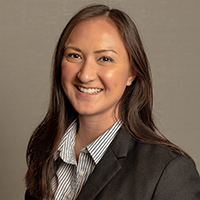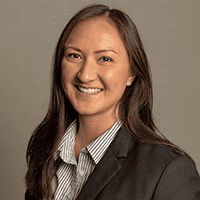
How Banks Can Solve the Problem of the Unbanked
The tenacious problem of the unbanked may have a powerful opponent: a consumer-friendly checking account offered by banks across the country.
More than 7 million U.S. households didn’t have a bank account in 2019, according to the Federal Deposit Insurance Corp.; and a quarter of those households were “very or somewhat interested” in opening one. To close that gap, more than 100 financial institutions have certified one of their checking accounts as safe, affordable and transparent. The program, called Bank On, aims to leverage banks as a community partner to make it easier and cheaper to bring unbanked and underbanked individuals into the bank space.
The Bank On program pairs certified checking accounts issued by local banks to community programs that support financial empowerment and wellbeing. The account standards were created by the Cities for Financial Empowerment Fund, with input from financial institutions, trade associations, consumer groups, nonprofits and government parties. The accounts must be “safe, affordable and fully transactional,” says David Rothstein, who leads the national Bank On initiative as a senior principal at the CFE Fund. These accounts don’t carry overdraft fees or high monthly fees. They have a low minimum opening deposit and the account holder must be a full bank customer, with access to other services.
The standards address some of the concerns that unbanked households have about bank accounts or their experience with banking. Almost 50% of respondents told the FDIC that they didn’t have enough money to meet minimum balance requirements, 34% said account fees were too high and 31% said fees were too unpredictable (respondents could select more than one reason).
The FDIC found that not having a bank account translates into greater reliance on potentially costly nonbank financial services. Among unbanked households, 42% said they used money orders.
“People are far more likely to reach their savings goals when they have a bank account and they’re getting [financial] counseling. They’re much more likely to improve their credit scores and pay down debt as well,” Rothstein says.
Chicago-based First Midwest Bancorp recently decided to certify its Foundation Checking account, a product it has offered for decades that is at the crux of how the bank helps its customers find financial success and independence. First Midwest offers Foundation Checking customers financial counseling either in-house or through nonprofit partners; having a Bank On-certified account was a “natural extension” and puts the $21.6 billion bank on the radar of even more nonprofit partners that are focused on financial wellness within its Illinois, Wisconsin and Iowa markets, says Thomas Prame, head of retail banking. He adds that the application process was simple and smooth.
Millions of Bank On accounts have been opened in recent years. The Federal Reserve Bank of St. Louis maintains a data hub of account activity submitted by 10 participating banks, ranging from Bank of America Corp. and JPMorgan Chase to $2.9 billion Carrollton Bank, the bank unit of Carrollton, Illinois-based CBX Corp.
More than 5.8 million accounts have been opened at these banks to date; 2.6 million accounts were open and active in 2019. The Federal Reserve Bank of St. Louis found that almost $23 billion was deposited into Bank On-certified accounts at those banks in 2019, according to its most-recent report, with an average monthly balance of $345 per account. A little more than a quarter of the account holders used direct deposit; three-quarters were digitally active. In 2019, 85% of the customers who opened a Bank On-certified account at one of these banks was a new customer.
Adoption of these accounts is “greatest in areas with high concentrations of lower-income and minority households,” using zip code as a proxy, according to a July analysis of the data by the Bank Policy Institute, a big bank trade association. In 2017, nearly 60% of new Bank On-certified accounts were for customers residing in a zip code with more than 50% ethnically diverse populations, even though 30% of the participating bank branches were in these zip codes.
Banks that offer certified accounts are eligible to receive credit for the Community Reinvestment Act for the accounts themselves as well as volunteering or financially contributing to local coalitions that promote these accounts within their markets. Additionally, the accounts can attract new and younger customers to a bank, forging relationships that could deepen over time as the customer ages. More than 115 financial institutions have certified one of their accounts in the program.
Account certification is simple and straightforward. The CFE matches a bank’s account to the terms and conditions of the program and alerts the institution if it needs to make any changes. Certification can take as little as a week; the CFE can also pre-certify an account that hasn’t launched yet. Banks with qualifying accounts can use the Bank On seal of approval in marketing and other communications.



